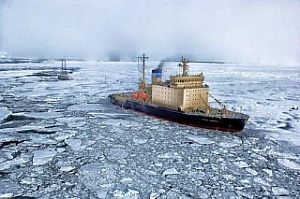The TSU Research Institute of Applied Mathematics and Mechanics and their colleagues from the Federal Research and Production Center “Altai” and the State Research Center of the Russian Federation “Trinity” are working on creating a new, powerful magnetohydrodynamic (MHD) generator for electrical exploration of oil fields on land and offshore in the Arctic. For the first time, the modernized installation will not use rocket fuel, but instead pyrotechnic fuel, which will make the work process many times more environmentally friendly and much less costly.
- Because of of depletion of hydrocarbon reserves on land, offshore oil production has a particular importance, - says Vladimir Butov, head of the base design center (BDC) of the TSU Research Institute of Applied Mathematics and Mechanics. - The main method of searching for deposits in the sea is electrical prospecting, during which geophysicists probe the earth's crust at a depth of several tens of kilometers. This requires powerful specialized current sources. The most popular are MHD generators, which have been used in a wide variety of areas from electronic reconnaissance to the military-industrial complex and aviation. However, taking into account the issues in the Arctic, new technological approaches are needed that will be not only effective but also safe for the environment.
Traditionally, MHD generators operate on the combustion products of solid metalized plasma, forming fuel that is similar to rocket fuel. Alkali metals are one of its important components. Previously, for example, cesium was often used. Now developers are trying to use less harmful ingredients. The tasks of the joint scientific group include creating a new autonomous high-power energy source (17 megawatts) with a small volume and weight, reducing the cost of fuel and the volume of harmful emissions in comparison with existing installations.
- It was decided to switch to a more environmentally friendly and cheaper type of fuel - pyrotechnic. Its main components are powders of magnesium (fuel) and potassium nitrate (oxidizer), which have a developed raw material and production base in Russia and in most countries of the world, - explains Vladimir Butov. - The estimated total cost of one kilogram of combined fuel will be one-fourth of the lowest cost of ballistic solid plasma-forming fuel.
According to Vladimir Butov, the scheme of an MHD generator operating on pyrotechnic fuel will be more complicated. A two-stage combustion chamber is required to extract the maximum energy from metal when burning it. Currently, work is underway to create a virtual model of the installation. All test work will be carried out on it, including testing fuel with different components to select the optimal composition.
By the end of 2020, scientists will carry out all the work on simulating the installation and testing its functionality. At the beginning of 2021, the developers will move to the level of the conceptual design of a new pulsed MHD generator necessary to search for offshore oil.
The sedimentary basins of the Russian Arctic shelf are comparable to the largest oil and gas regions in the world in total oil and gas potential. The hydrocarbon resources in the Arctic seas of Russia are estimated at tens of billions of tons of oil equivalent. The efficiency of raw material extraction will directly depend on the level of new technologies created by Russian scientis

